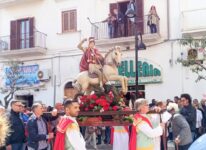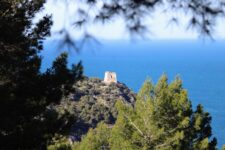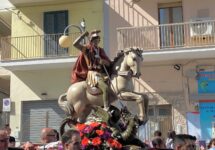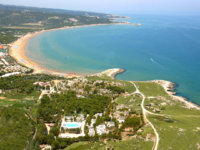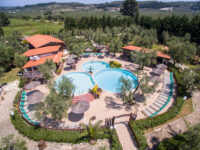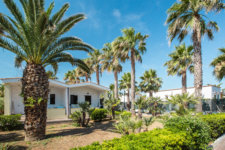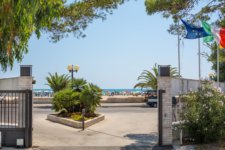For the Celts the sacred wood was the "nemeton", a term that derives from the same root as nemus. This Celtic nemeton was the "drunemeton", the sacred grove of oaks (the only sanctuaries of the insular Britons and Germans), place of meeting and worship of the Celtogalian tribes.
More generally it was the "Druid temple" in the middle of the forests, secluded from the social group of which it was however the indispensable spiritual completion. Roman writers mention the Gargano covered by a single immense expanse of forests, the "Nemus Garganicum" and Virgil mentions the Gargano and calls it "Nemetun Garganum" Gargano forest.
Dolmens were also often used (e.g. that of Molinella a Vieste destroyed by an excavation in 1981 < >) and the megalithic menirs, already built by previous civilizations, to represent a continuity between man and the firmament.
On tombstones dating back to the VII-VI century BC, now kept in the museum of Manfredonia, found between the mouth of the Cervaro and that of the Candelaro, where the pre-Roman Siponto probably stood. In them there are various iconographic elements that blend facts of daily life and combat scenes, in which the warriors wear helmets typical of the Celtic tradition.
The beliefs relating to the sacred grove of Barenton, where Merlin had retired, make explicit the function represented in the past by the Celtic nemetons. After all, Barenton is the deformation of Belenon, Belenus and/or BELENOS, the Gallic solar god and protector of sheep and cattle (the most important divinity of Gaul until 2.000 BC, his cult was widespread "in the former X Regio Agustea “ in Aquileia, from which the Mithraic cult derives, depicted in a cave with a cloak, while a bull is being sacrificed and at his feet there is a scorpion ) whose cult was widespread in the north/east of Italy and in Liguria. << O. Janovitiz – the solar cult in the X Regio-Ce.SDIR>>). BELENOS is the father of GARGAN woodland god. GARGAN is the pine with which Merlin is in close relationship in the legend, to the point of being considered the progenitor of Rabelais' Garganatua << Jacques Brossé – Mythology of Trees – p. 164>>. The Romans indistinctly identified with Apollo, the solar god, a host of different Gallic deities including, in particular, Belenos.
And in fact for the Gauls their divinity < > was a being who was Father and Son at the same time. As Father, he was called BELENUS; substantially equivalent to Apollo of Mediterranean culture, he was the great sun god originally worshiped by pre-Indo-European populations. As a Son he was felt to be closer to the earth, somehow related to stones, trees and waters; his name was GARGANO.
The French territory, to limit ourselves to this, is dotted with places whose name is etymologically connected to that of Belenus (or Belen in French) orGARGAN. Depending on the phonetic evolution of the various areas, these are ancient strongholds of the Gauls, Gergobina and Gergovie; in Guérande, the Gorgon castle; these are rivers: Gorganne, Gorgonne, Gargonne, Gargonde; of heights: Gargatte, Jariatte… It is not uncommon for the two names to go side by side; or - and it may be even more symptomatic - not far from the place that recalls Belenus survives (or survived until recently) a popular legend whose hero is a giant mostly called Gargantua.
Unfortunately we know very little about the ancient Gargantua. He must have been a character of a certain importance if, as Markale notes, French toponymy presents a large number of places called "Passo di Gargantua", "poggio di Gargantua" and the like. We also find this name in toponyms such as Mont Gargan in the Limousin, Livry-Gargan in the Paris region and even in the name of Monte Gargano in Italy < >.
Beleno in France is another protagonist of the veneration of the Celtic-Christian people is Saint Michael the Archangel, the warrior angel who brandishes the sword and slays the dragon, to whom numerous sanctuaries throughout Europe are dedicated, such as the famous one of Mont-St.-Michel, in France, once a place sacred to the Druids with the name of "Mons vel tumba Béleni" or Mount and tomb of Beleno.
The famous Mont Saint Michel until the thirteenth century still bore the name of Mount Gargan (at the time the Gargano was identified with the same name Monte GARGANUS or Monte Gargano) and the nearby rock is still today called Tombelaine, i.e. tumba Beleni, the tomb of Belenos.
In the basilica of San Michele in Monte Sant'Angelo on the inscriptions on the walls, the analysis of the names, made by the scholars of the University of Bari, denotes a clear prevalence of Longobard populations. However, there are also inscriptions engraved in the ancient runic alphabet which hand down names of the British area. What is certain is that between the end of the XNUMXth and the beginning of the XNUMXth century the Gargano cave was already a place of worship, as attested by some inscriptions which show that a pilgrimage of a certain importance already existed in this regard.
Indeed, it would seem that the angel of the Christian tradition embodies the characteristics of the luminous god Lugh-Belenos, a god who expressed the warrior and priestly function.
Among other things, the very close analogy between the text of the Apparitio sancti Michaelis and that of the legend of the foundation of Mont-Saint-Michel called "au péril de la mer": that the place was called, still at the end of the Middle Ages, "Mont GARGAN", was placed in French folklore in relation to a mythical son of the god Belenos to whom that name was attributed, and who he then became the giant Gargantua.
Thus there was no need for a great change, in a period of conversion of pagan temples into Christian places of worship, to make these Celtic divinities, such as the BELENUS GARGAN, into a Saint Michael Minister of divine wraths in a temple sacred to Druids whose name is etymologically connected to that of our territory "GARGANO".
Gargantua, this character seems to have been one of the most important Gods; his domain exceeded the area of extension of the Celts perhaps the origin of him dates back to the pre-Celtic period, that is to the megalithic one.
In fact, it is always linked to menhirs or dolmens, which popular tradition considers its toys.
In the chronicles of the twelfth century, Giraud de Cambrie identifies him as a son of Belenos, but there is no prior information on the origin of this god.
The presence of the giant, so consistent throughout Brittany, is also recognizable in much of France and even in Italy: just think of the Gargano in Puglia.
A great eater and drinker, capable of incredible feats aided by his large build, Gargantua was a gentle giant; in all traditions he always appears well-liked, sympathetic and Christianization has never managed to dent this reputation as a good-natured and cheerful God.
He often manifests himself in the guise of a pilgrim, so much so that his legend is sometimes confused with that of the wandering Jew.
According to some studies, the figure of the Gargano Giant in southern Italy coincides with the figure of Heracles (Hercules).
Finally, given that these populations knew the secret of the art of working flint, and were endowed with a great geological flair, they knew navigation, it would be necessary to investigate the relationship between the cult of Belenus-GARGAN and flint.

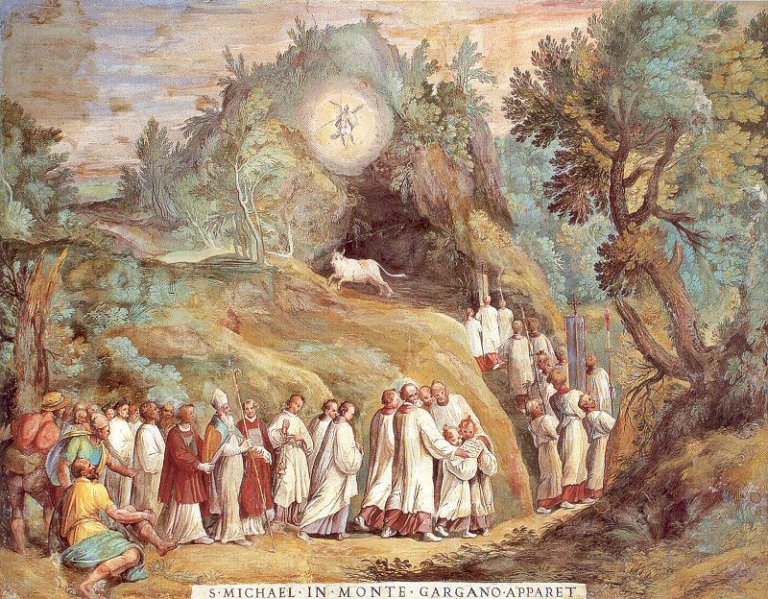
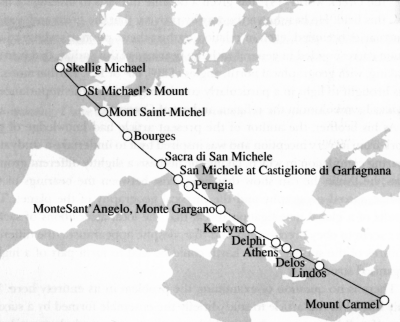
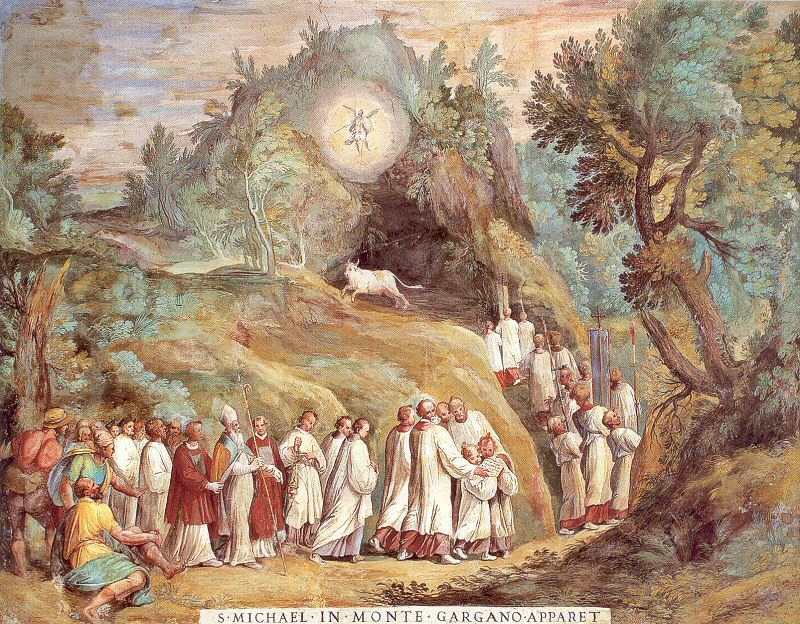
 Turismovieste.it is created by
Turismovieste.it is created by 
